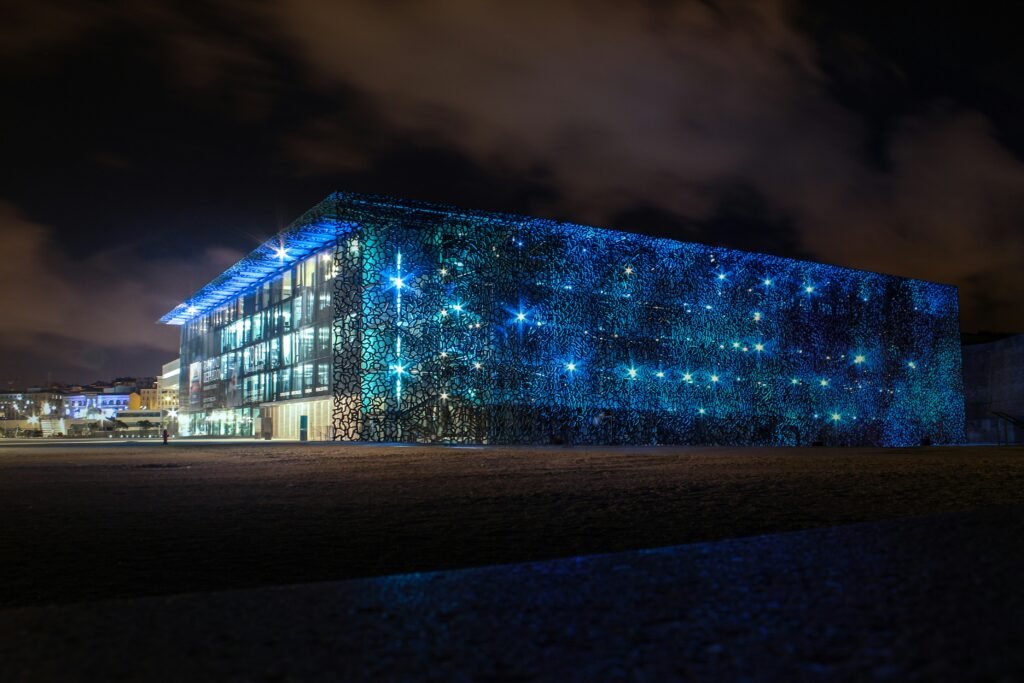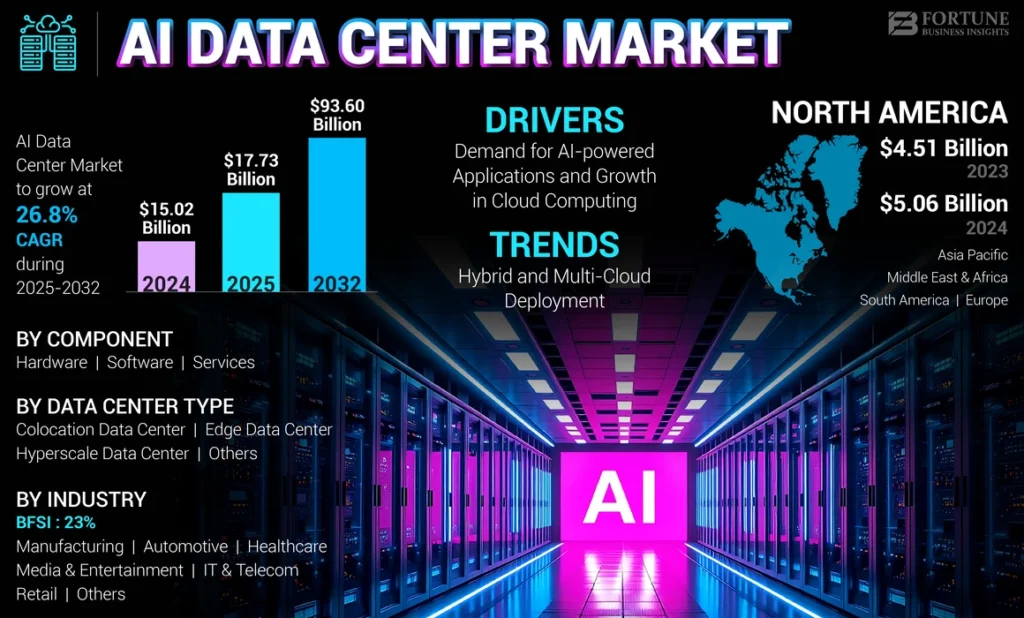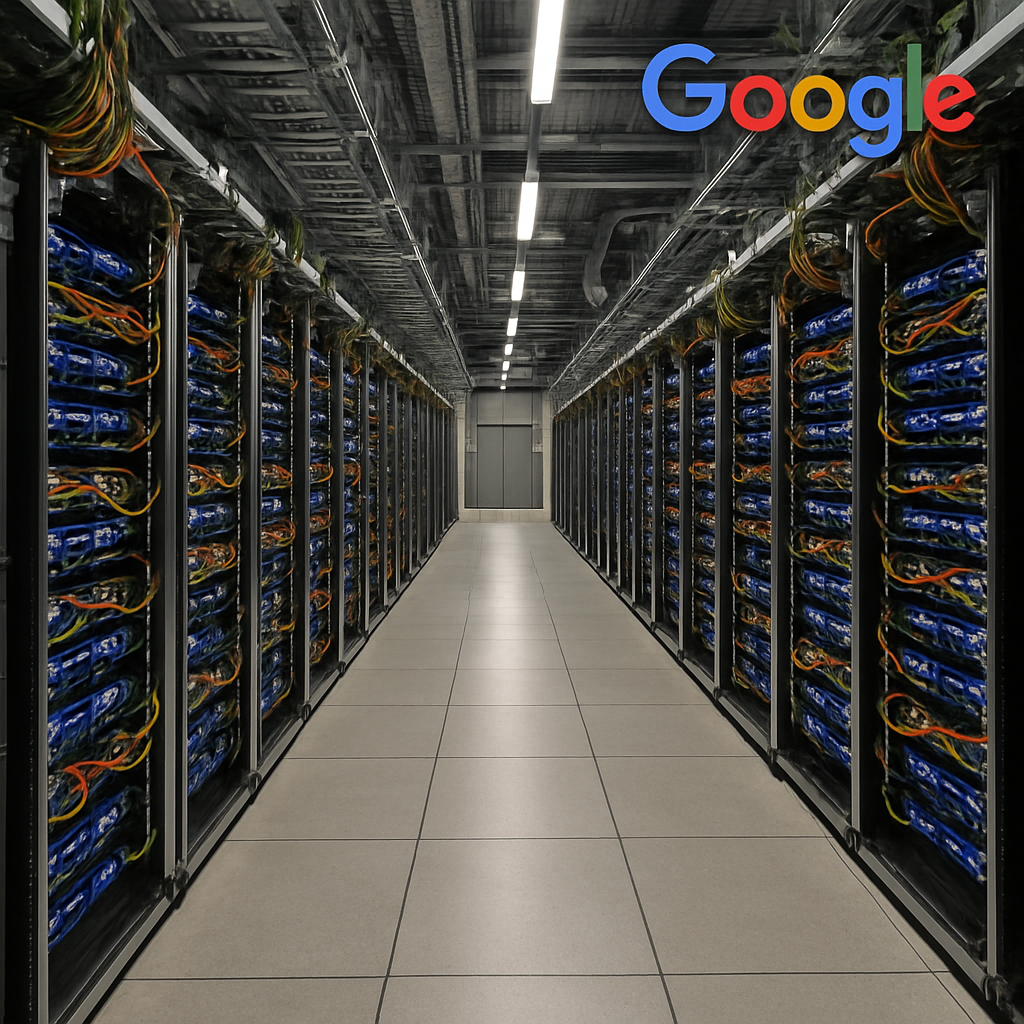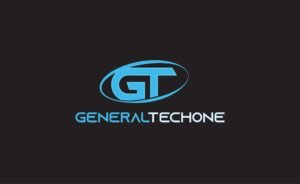Inside the $3 Trillion AI Datacenter Boom: Growth Engine or Bubble?
The artificial intelligence revolution is reshaping not only how we interact with machines but also how we build the physical backbone of the digital world. AI datacenters—once obscure pieces of infrastructure—are now in the spotlight as tech giants pour trillions into building these massive, energy-hungry digital warehouses. But amid this frenzy, a critical question emerges: is this a tech boom… or the early signs of a bubble?

The Rise of the AI Datacenter Economy
From ChatGPT to Google’s Veo 3, today’s advanced AI tools rely heavily on powerful datacenters packed with cutting-edge chips and servers. These are the nerve centers of our cloud-driven world.
Key Highlights:
- Projected Spending: $3 trillion by 2028, according to Morgan Stanley.
- Hyperscaler Dominance: Microsoft, Google, Amazon, and Meta expected to cover $1.4 trillion from internal cashflow.
- Demand Drivers: AI agents, image generators, real-time assistants.
- Revenue Projections: Generative AI could yield $1 trillion by 2028.
Read more in our AI category.

Financing the Boom: A Growing Risk Profile
While tech leaders are confident in their growth strategies, a $1.5 trillion gap in funding remains. Here’s how it’s expected to be filled:
- Private Credit Markets: ~$800 billion (e.g., Meta’s $29B Louisiana expansion).
- New Bonds: ~$200 billion from investment-grade issuances.
- Asset-Backed Securities: ~$150 billion, mostly tied to server infrastructure.
Experts warn this financing spree could create systemic risk. As Gil Luria from DA Davidson notes, “These are unproven assets depreciating faster than their revenue streams.”
Are We Building Too Fast?
AI infrastructure is expanding at breakneck speed:
- 11,000+ datacenters globally — a 500% increase in 20 years.
- New Projects: Microsoft’s Newport, UK; OpenAI’s Stargate in Texas; and Nvidia-backed facilities across North America.
- Energy Demand: Datacenters could require 10–15% of national grid capacity in some countries by 2030.
Yet, studies show many projects may never go live. The Uptime Institute warns that a large share of newly announced datacenters are speculative and may only be partially completed—or not at all.
Real Impact on Communities
In cities like Newport, Wales, datacenters are reviving local economies. Microsoft’s new build there—on the site of an old radiator factory—is expected to create thousands of skilled jobs.
“Do you bring back steel, or embrace the future?” —Dimitri Batrouni, Newport City Council
Young apprentices are entering the field, and tech hubs are replacing old industrial zones, offering multi-generational opportunities in AI infrastructure.
What’s Next for AI Infrastructure?
The datacenter boom may very well support the next wave of digital transformation—if demand holds steady. Yet history has taught us to be cautious when enthusiasm outpaces utility. Investors, governments, and innovators alike must navigate this wave with both optimism and realism.
Explore more in our Technology section.

Final Thoughts
AI datacenters are more than steel and silicon—they’re the foundation of tomorrow’s economy. But with trillions at stake, careful planning and realistic expectations are essential. Whether this ends in a powerful new infrastructure or an overheated market depends on what we build—and how wisely we do it.
📩 Want to stay ahead of the AI curve? Subscribe to GtechOne for weekly insights on datacenter trends, AI investments, and cloud computing developments.
Sources:







